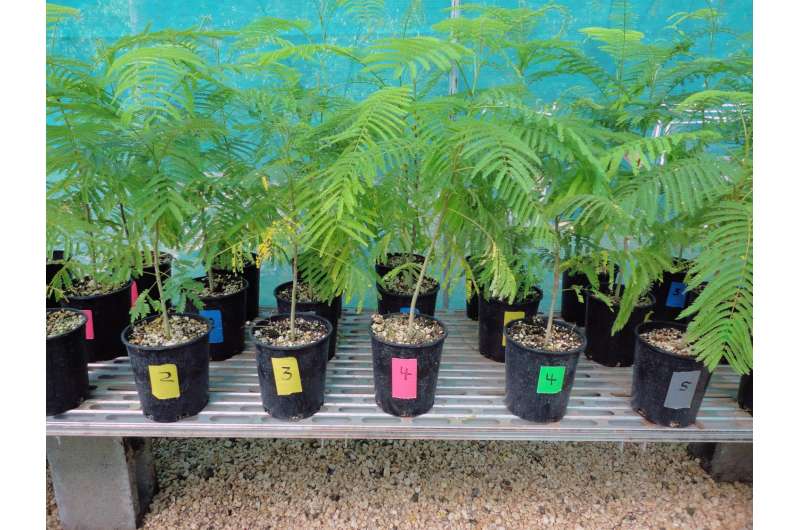Propagation research on rare trees expands species recovery potential

Many rare tropical tree species are restricted to a small, endemic range with very few remaining reproductive individuals. These species suffer from many threats. Conservation agencies often attempt to rebuild the population within the known endemic range of these endangered trees.
This desire to rebuild robust populations of rare trees is constrained by the need to protect any remaining adult trees. Conservation permitting agencies generally limit the number of seeds and cuttings that can be taken by conservation practitioners. The unfortunate result of these justifiable restrictions is that very few new propagules can be produced every year for the purpose of rebuilding the population.
Serianthes nelsonii is found on two small islands in the Mariana Island Archipelago, and the population has declined to one individual on one of those islands. The recovery plan for this species calls for the propagation of more than 4,000 transplants for out-planting into several population sties. Recent propagation research conducted at the University of Guam has opened up new protocols that may greatly expand the number of propagules that can be produced every year in support of these goals. The results were published in the current issue of the journal Tropical Conservation Science.
"The most successful propagation techniques vary from species to species," said author Thomas Marler. "This is especially true for woody tree species, and dedicated propagation trials are needed for each species." The new knowledge allows conservation nurseries to capitalize on the fact that specimens growing in a nursery can be used as a source for an unrestricted number of new propagules.
Marler also illuminates an approach that can exploit the fresh stem tissue that is dislodged during tropical cyclones. Indeed, the western Pacific Ocean has the distinction of being the most active tropical cyclone region globally. These violent storms defoliate and dislodge branches, leaving a pulse of green litter on the forest floor. The green stem tissue found among the copious amounts of leaf litter immediately following one these storms would not fall under the permitting restrictions of how many cuttings can be taken from the trees. Conservation nurseries may maintain a collection of container-grown plants throughout each annual tropical cyclone season, ready to serve as rootstocks for the creation of grafted plants using suitable green stem tissue collected from the forest floor following a tropical cyclone.
The case study is an example of how non-destructive horticulture research can be implemented on endangered species nursery plants as a means of improving species recovery protocols. Conservation funding agencies would benefit from contracting competent horticultural researchers to manage conservation nurseries.
More information: Thomas E. Marler, Asexual Reproduction to Propel Recovery Efforts of the Critically Endangered Håyun Lågu Tree (Merr.), Tropical Conservation Science (2017). DOI: 10.1177/1940082917697707
Provided by University of Guam




















